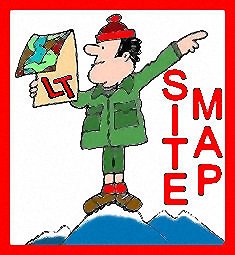
Lackawanna Trail Junior-Senior High School This is outdated, but may be useful for historical research Technology
Education Department |
||||
|
||||
Junior High Courses Technology Education - 1/3 of Credit This course is designed to enable students to understand the influence of modern technology and technological systems on their lifestyles in the home, school, and work environments. Instruction will be provided through hands-on laboratory based activities using modern hand tools and a limited amount of machinery to help build skills and confidence. Class activities will develop basic tool skills and problem solving skills in the following areas: mechanical drawing, project design, woodworking, bridge building and graphic arts. This course is mandatory. Senior High CoursesWoodworking I - 1 Credit - This course is designed to introduce students to elementary cabinet construction and the use of power and woodworking equipment. Emphasis will be on design, planning, construction, and work performance. Students will build a group project and select at least one individual project. This course will be useful to any student interested in increasing his/her whole life skills and their background regarding technology. Woodworking II and III - 1 Credit - This course is designed for students who are interested in gaining more experience in the use of woodworking equipment and cabinet construction. The purpose of this course is to direct students towards the completion of more complex wood projects. Students are encouraged to use advanced joinery and craftsmanship during the fabrication and assembly of their group manufacturing project. The Woodworking III section of this course encourages further development of skills and abilities to solve woodworking problems. Students at this level will be allowed independent study and pursuit of special interests in woodworking. Graphic Communications I - 1 Credit - This course is designed to introduce students to the various techniques and materials used in printing, commercial art, and graphic communications. The main areas to be included in the course will be: desktop publishing, silk screen printing, offset printing, and illustration. In each of these areas - artwork, image assembly, image carrier preparation, image transfer, and finishing procedures will be covered. Students interested in art, commercial art, communications, business, media printing, and graphic design, need this course in their background. Graphics II – 1 Credit - Students who choose this course will be able to further their knowledge in the Graphic Communication field. Advanced offset printing, screen printing and advertising will be addressed. Students taking this course should show an interest in pursuing a career in the Graphic Communication Industry. Electronics I - 1 Credit - Prerequisite - Pre-Algebra. This survey course of electricity and electronics is designed to acquaint the student with many basic electrical – electronic principles and systems. Students design, produce, and evaluate individual/group electronic projects. Included in this course are the practical applications of electrical – electron theory, interactive computer controlled test – lab equipment, troubleshooting, schematic reading and building a variety of electronic projects. Electronics
II - 1 Credit - This
survey course of AC electronic devices is designed to acquaint the student
with many basics principles involved with alternating current. This course
allows students to design, produce, and evaluate individual/group electronic
projects. Included in this course are the practical applications of power
transformers, interactive computer controlled test – lab equipment,
troubleshooting, schematic reading and building a variety of electronic
projects. Computer Aided Drafting II (CAD II) - 1 Credit - CAD II is a course which explains the use of AutoCAD 2002 variables providing advanced instruction in drafting principles and software application. Class activities may include auxiliary views, production drawings and 3-D designs. Emphasis will be placed on the mastery of AutoCAD’s three-dimensional capabilities in the creation of solid objects and the application of rendering materials and lights. Students will be assessed through evaluation of computer skills, software knowledge and application, individual drawings and tests. Architectural Computer Aided Drafting - 1 Credit - Required – CAD I: This course is designed to teach the methodology of constructing architectural drawings using AutoCAD 2002’s Architectural Desktop software and to further the student’s computer aided drafting skills. The major components of the course will include Floor Plans, Building and Wall Sections, Elevations and Perspectives in standard 2-D and 3-D formats. Assessment will be achieved through evaluation of software knowledge and application, completed drawings and testing. Desktop Publishing I - 1 Credit - This course will provide hands-on experience in the creation of electronically produced, printed materials with emphasis placed on original design and layout. Typical assignments will include flyers, charts, greeting cards, pamphlet covers, newspaper articles, photo manipulation, and PowerPoint Presentations. This course will introduce the following latest release publishing computer software-Microsoft Word, Adobe PageMaker, Adobe Photoshop, and Adobe Illustrator. Assessment will be achieved through evaluation of software knowledge and application, completed assignments and testing. |
|